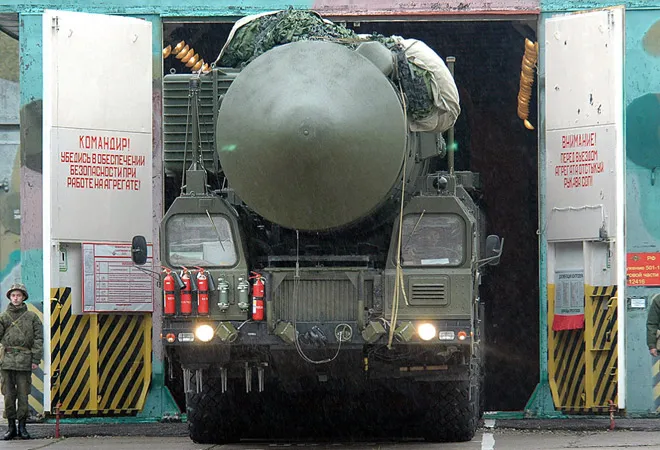-
CENTRES
Progammes & Centres
Location
The future of strategic arms control faces a host of problems, from Russia’s invasion of Ukraine and China’s growing nuclear forces to the challenging geopolitical landscape.

The INF Treaty dealt with land-based missiles in the 500-5,500-kilometer range, but the U.S. was concerned about Russian violations of the treaty, especially regarding the range of SSC-8 “Screwdriver” cruise missile.The New START treaty was the last surviving arms control agreements between the U.S. and Russia. In October 2018, President Donald Trump withdrew the U.S. from the Intermediate Range Nuclear Forces (INF) Treaty, which was in existence for three decades. The INF Treaty dealt with land-based missiles in the 500-5,500-kilometer range, but the U.S. was concerned about Russian violations of the treaty, especially regarding the range of SSC-8 “Screwdriver” cruise missile. In addition, the U.S. was also concerned that the treaty did not include China and limited the U.S. from deploying missiles to counter China’s intermediate range systems. China, of course, was not party to the INF Treaty. Prior to that, the U.S. also withdrew from the Anti-Ballistic Missile (ABM) Treaty (1972) during the George W. Bush administration. As in the case of the INF Treaty, this was driven by the U.S. fear that the treaty limited U.S. efforts to respond to military capabilities that countries other than Russia were developing. Specifically, the U.S. felt threatened by the rapid development of long-range ballistic missiles by North Korea and Iran. From the perspective of the Bush administration, the ABM Treaty stood in the way of U.S. development of missile defenses to counter these new threats. Russia’s suspension of its participation in the New START is unlikely to be a serious threat. It is more likely a sign of Russian displeasure at western support for Ukraine. The treaty itself expires in 2026. A more serious problem is whether Russia and the U.S. will be able to negotiate a follow-on treaty to succeed the New START Treaty. These treaties are complicated and can take years to negotiate, which means that it is difficult to expect a new follow-on treaty in the three years left. However, it is always possible that, as before, the New START Treaty can be extended for a period of time. Recall that the original treaty itself was valid only for 10 years. Thus, it is quite possible for the two parties to decide to further extend the treaty if they so desire.
The treaty itself expires in 2026. A more serious problem is whether Russia and the U.S. will be able to negotiate a follow-on treaty to succeed the New START Treaty.However, there is one problem to be faced. Both the U.S. and Russia are concerned about China’s expanding nuclear arsenal. In a few years, China is likely to have close to 1,500 nuclear warheads, the limit that the New START Treaty has imposed on the U.S. and Russia (though this limit only includes warheads on strategic systems). Both countries would want to include China as part of any new treaty, but that would make the task much more difficult and complicated.
The views expressed above belong to the author(s). ORF research and analyses now available on Telegram! Click here to access our curated content — blogs, longforms and interviews.

Dr Rajeswari (Raji) Pillai Rajagopalan was the Director of the Centre for Security, Strategy and Technology (CSST) at the Observer Research Foundation, New Delhi. Dr ...
Read More +